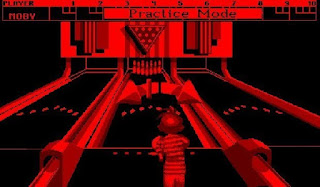The allure of video games undeniably lies in their immersive qualities. Just as we are engrossed in the real world with its unchanging laws, video games evoke a similar sensation by creating an alternate universe with stringent rules. This applies to both traditional console or PC games and the rising trend of mobile games.
A key strategy for enhancing the gaming experience is to incorporate real-world dynamics, albeit occasionally with a twist, while preserving a level of credibility. But what compels game developers to devise such intricate systems?
The Role of Physics Engines
Game developers utilize physics engines to simulate real-world physics within their games. Consider this scenario: you're in a park, and an apple falls from a tree onto your head. If you were Isaac Newton, you might win a Nobel Prize, but for most of us, the apple will likely bounce off, bruise a little, and then fall to the ground.
Now, imagine you're a game developer. When the apple falls onto the physicist's head, what happens next?
1. Nothing - The apple does not bounce, and the player loses the sense of reality. This might affect the game's sales.
2. You build a script - This script repeats every time an apple falls in your game's world, adding a sense of credibility without burdening you.
3. You use a physics engine - The engine replicates the physical laws of our world based on the parameters you've defined. This approach provides different outcomes each time the apple falls, offering the most effective realism.
If you're intrigued by the prospect of becoming a game developer, you might find this article on learning programming interesting. But how exactly do these engines work?
The Importance of Collision Systems
Let's revisit the falling apple scenario. Suppose the apple lands on Isaac, but we didn't execute the collision correctly. The apple falls through Isaac, into the earth's crust, and ends up at the earth's center, where we've placed the gravitational attraction point.
The issue here is that our physics engine lacks the necessary information to tell the apple to stop and potentially bounce when it collides with Isaac's head.
This is where a collision system comes into play. However, creating one involves a series of trade-offs. A highly detailed, continuous collision system puts a significant strain on the physics engine. Therefore, we often resort to simplifications or a frame-per-frame collision system that updates less frequently but is less CPU-intensive.
Interested in learning more about collision systems? Here's an informative crew play article you might find useful
Hard and Soft Bodies.
It is also important to define the difference between rigid and soft bodies. The former can be defined as objects composed of x number of vertices connected by undeformable rods, thus always at the same distance from each other, while in the latter the vertices are connected by deformable springs, thus not necessarily always at the same distance.
Perhaps it is clearer now to understand why a soft object is much more complex to handle than a rigid one. This leads to what we were saying about the tradeoff: when we see soft objects interacting with each other, developers often take advantage of a precomputed animation to lighten the load.
In our first example then, we can say that perhaps it would have been more effective to prepare an animation for Isaac to interact with the apple, in case we wanted to give a lot of detail to the scene. On the other hand, if we are willing to compromise, we can treat Isaac and the apple as rigid objects and get results that are less precise but computed in real-time by the physics engine.
In summary.
Beyond these basics, there are a thousand other details that must be reproduced within a typical video game, but these alone are enough for us to understand that modern video games are some of the most complex software ever made by man. And all for a seemingly unimportant result: play!


Post a Comment